DIY Floating Shelves: A Great Decor Addition
Are you looking to add a touch of elegance and functionality to your home? DIY floating shelves might just be the answer! These shelves not only provide a practical storage solution but also serve as a stunning decor element that can elevate the entire look of your space. Imagine displaying your favorite books, plants, or decorative items on sleek, wall-mounted shelves that seem to defy gravity. Sounds intriguing, right?
Floating shelves are incredibly versatile. They can be installed in any room, whether it's the living room, kitchen, or bedroom. The beauty of these shelves lies in their ability to blend seamlessly with various design styles, from modern minimalism to rustic charm. Plus, they save valuable floor space, making them ideal for smaller rooms or apartments. You can customize them to fit your personal style, choosing from a variety of materials, colors, and sizes.
In this article, we'll explore the numerous benefits of floating shelves, the best materials to use, and a step-by-step guide on how to install them. We’ll also share creative decorating ideas to make your new shelves a focal point of your home. So, grab your tools and let’s dive into the world of DIY floating shelves!
Floating shelves offer a myriad of advantages that make them a popular choice among homeowners. Here are some key benefits:
- Space-Saving: They utilize vertical space, leaving your floors clear and open.
- Versatility: Perfect for any room and can hold a variety of items.
- Customization: Tailor them to your style and needs with different materials and finishes.
- Easy Installation: With the right tools and guidance, you can install them yourself!
These benefits make floating shelves not just a decor addition but a functional storage solution that enhances the overall aesthetic of your home.
When it comes to building floating shelves, selecting the right materials is crucial. The durability and design of your shelves can vary significantly based on your choices. The most common materials include:
- Wood: Offers warmth and can be stained or painted to match your decor.
- Metal: Provides a sleek, modern look and is incredibly sturdy.
- Glass: Adds an airy feel and works well in contemporary spaces.
Understanding the unique characteristics of each material will help you choose the best one for your project. For instance, wood can give a cozy vibe, while metal and glass can bring a sophisticated edge to your decor.
Wood is a classic choice for floating shelves, and it comes in various types. Each type of wood has its own aesthetic and strength. Here are some popular options:
| Type of Wood | Characteristics |
|---|---|
| Pine | Lightweight, easy to work with, and cost-effective. |
| Oak | Durable, strong, and offers a premium look. |
| Plywood | Versatile and can be finished in various ways. |
Choosing the right wood will depend on your budget, desired look, and the weight of the items you plan to display.
When deciding between softwoods and hardwoods, consider the following:
- Softwoods: Generally lighter and easier to cut, making them ideal for DIY projects.
- Hardwoods: Denser and more durable, providing a premium finish but may require more effort to work with.
Think about the purpose of your shelves and the aesthetic you want to achieve when making this decision.
Once you've chosen your wood, applying the right finish can enhance its beauty and protect it from wear and tear. Popular finishing techniques include:
- Staining: Adds color while showcasing the natural grain.
- Painting: Offers a bold look and allows for endless color options.
- Sealing: Protects the wood from moisture and damage.
Experiment with different finishes to achieve the desired look for your floating shelves.
If you’re aiming for a more modern aesthetic, consider using metal or glass for your floating shelves. Metal offers a sleek, industrial vibe, while glass can create an open, airy feel. Both materials are highly durable and can support a significant amount of weight when installed correctly. However, they may require specific installation techniques to ensure safety and stability.
Installing floating shelves might seem daunting, but with the right guidance, it can be a straightforward process. Here’s a brief overview to get you started:
- Gather Your Tools: You'll need a drill, level, measuring tape, and brackets or cleats.
- Measure and Mark: Accurate measurements are crucial for a professional-looking installation.
- Mounting: Choose the right mounting technique based on your shelf material and weight capacity.
Following these steps will lead you to a successful installation, allowing you to enjoy your new floating shelves in no time!
Q: Can I install floating shelves on drywall?
A: Yes, but make sure to use wall anchors or find studs for better support.
Q: How much weight can floating shelves hold?
A: It depends on the materials and installation method, but typically they can hold between 20 to 50 pounds.
Q: Can I customize the size of my floating shelves?
A: Absolutely! You can cut the wood or choose metal and glass options in various sizes to fit your needs.
Floating shelves are not just about aesthetics; they're about creating a functional and stylish space in your home. So, roll up your sleeves and get started on your DIY floating shelf project today!

Benefits of Floating Shelves
This article explores the benefits, materials, and step-by-step instructions for creating floating shelves, enhancing your home decor while providing functional storage solutions. Discover tips and tricks for a successful DIY project.
Floating shelves are not just a trend; they are a game-changer in home decor. Imagine transforming a dull wall into a stunning display of your favorite items. With their sleek design, floating shelves offer a multitude of benefits that can elevate any space. First and foremost, they provide versatile storage solutions. Whether you need to showcase your book collection, display family photos, or organize kitchen essentials, floating shelves can adapt to your needs. They create a sense of openness in a room, making them perfect for smaller spaces where traditional shelving might feel bulky.
Another significant advantage is their customizability. You can choose the size, material, and finish that best fits your style. Whether you prefer a rustic wooden look or a modern glass finish, floating shelves can be tailored to match your decor. This flexibility allows you to create a cohesive look throughout your home, making your space feel more unified and thoughtfully designed.
Moreover, floating shelves can save space and offer practical solutions without compromising on style. Unlike traditional shelves that require floor space and bulky brackets, floating shelves mount directly to the wall, giving the illusion of more room. This feature is especially beneficial in small apartments or rooms where every inch counts. You can also use them to display decorative items that reflect your personality, turning an ordinary wall into a personalized gallery.
Lastly, the installation of floating shelves can be a DIY project, which not only makes it budget-friendly but also allows you to add a personal touch to your home. With just a few tools and materials, you can create stunning shelves that reflect your style and enhance your living space. So, if you're looking to improve your home decor while adding functional storage, floating shelves are a fantastic option!
Selecting the right materials is crucial for building sturdy floating shelves. Options like wood, metal, and glass each have unique characteristics, influencing both durability and design. Learn how to choose the best material for your project.
Different types of wood, such as pine, oak, and plywood, offer various aesthetics and strength. Understanding the properties of each type will help you make an informed decision for your floating shelves.
Softwoods like pine are lightweight and easy to work with, while hardwoods like oak provide durability and a premium look. Consider your project's requirements when choosing between these two categories.
Applying finishes like stains or paints can enhance the appearance of your wooden shelves. Explore various finishing techniques to protect your shelves while achieving the desired look.
Metal and glass provide a modern touch to floating shelves. Discover the benefits and design possibilities that these materials offer, along with tips for installation and maintenance.
Installing floating shelves can be a straightforward process if you follow the right steps. This guide outlines essential tools, measurements, and techniques for a successful installation.
Accurate measurements are vital for ensuring your shelves are level and properly spaced. Learn how to measure and mark your wall to achieve a professional-looking installation.
Different mounting techniques can affect the stability of your floating shelves. Explore various methods, including brackets and cleats, to secure your shelves effectively and safely.
Once installed, decorating your floating shelves can enhance their visual appeal. Discover creative ideas for styling your shelves with plants, books, and decorative items to personalize your space.
Selecting the right decorative items can transform your floating shelves into stunning focal points. Consider balance, color, and theme when choosing items to display.
The arrangement of items on your shelves can significantly affect their overall look. Learn tips for arranging your decor to create a cohesive and inviting display.
- How much weight can floating shelves hold? - The weight capacity depends on the materials used and the mounting technique. Generally, well-installed wooden shelves can hold between 20 to 40 pounds.
- Can I install floating shelves on drywall? - Yes, but it's essential to locate the studs behind the drywall for proper support. If that's not possible, use wall anchors designed for heavy loads.
- What tools do I need to install floating shelves? - Basic tools include a level, drill, screwdriver, measuring tape, and brackets or cleats for mounting.
- Can I use floating shelves in the bathroom? - Absolutely! Floating shelves work wonderfully in bathrooms for storing toiletries and displaying decorative items.
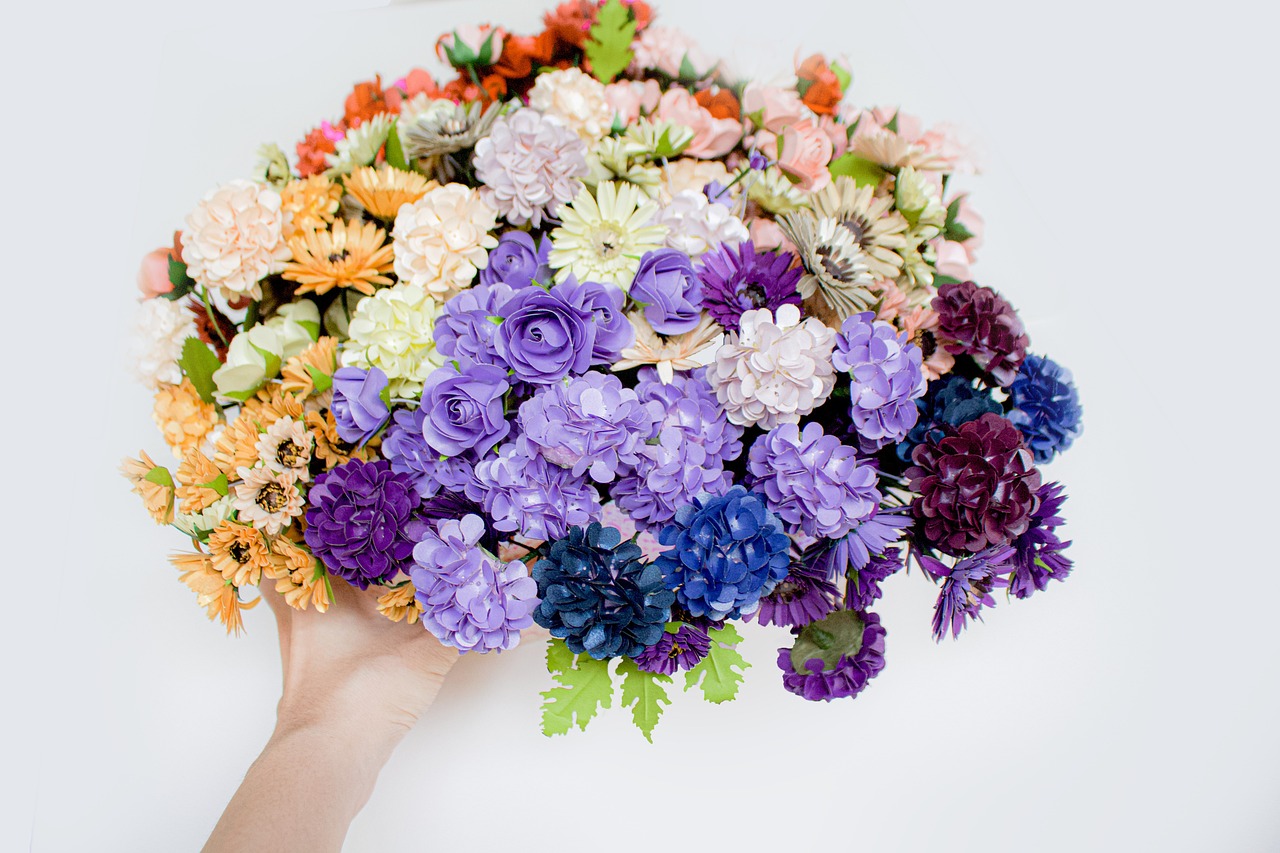
Choosing the Right Materials
When it comes to building your own floating shelves, is crucial. The materials you select not only affect the durability and strength of your shelves but also play a significant role in the overall aesthetic of your space. Whether you're aiming for a rustic vibe with wood, a sleek modern look with metal, or a delicate touch with glass, each material has its own unique characteristics that can enhance your home decor.
Let’s break down some popular materials to help you make an informed decision:
| Material | Characteristics | Best For |
|---|---|---|
| Wood | Warm, versatile, can be stained or painted | Traditional and rustic designs |
| Metal | Strong, industrial look, usually powder-coated | Modern and minimalist styles |
| Glass | Elegant, lightweight, can create a sense of openness | Contemporary and airy designs |
Each of these materials can be used to create stunning floating shelves, but they also come with their own set of considerations. For instance, if you choose wood, you’ll want to think about the type of wood that will best suit your needs. Softwoods like pine are lightweight and easy to work with, making them a popular choice for DIY projects. On the other hand, hardwoods such as oak offer superior durability and a more premium appearance, which might be ideal if you’re looking for something that lasts.
Moreover, the finishing techniques you apply to your wooden shelves can greatly affect their final look. Options like stains, paints, and sealants not only protect the wood but also allow you to customize the color and texture to match your decor. Imagine a rich walnut stain that brings out the natural grain of the wood, or a crisp white paint that complements a modern aesthetic. The possibilities are endless!
For those leaning towards a more contemporary style, metal and glass are fantastic options. Metal shelves can provide a rugged yet sleek look, perfect for industrial-themed spaces. They are incredibly sturdy and can hold heavier items without bending or breaking. Glass shelves, on the other hand, offer a light and airy feel, making them perfect for displaying decorative items without overwhelming the space. Just be sure to consider the weight limits and installation methods for these materials, as they often require specific mounting techniques to ensure safety.
In summary, the materials you choose for your floating shelves should align with both your functional needs and your design vision. By understanding the characteristics of wood, metal, and glass, you can create beautiful, practical shelves that enhance your home’s decor. So, what are you waiting for? Dive into your DIY project with the right materials and watch your space transform!
- What is the best material for floating shelves? It depends on your style and needs. Wood is great for a warm, rustic feel, while metal and glass offer a modern touch.
- How much weight can floating shelves hold? This varies by material and installation method. Always check the specifications and recommendations for the materials you choose.
- Can I use reclaimed wood for my shelves? Absolutely! Reclaimed wood can add character and uniqueness to your shelves, but ensure it's treated and sturdy.

Wood Options for Floating Shelves
When it comes to creating stunning floating shelves, the type of wood you choose plays a crucial role in both aesthetics and functionality. There are numerous wood options available, each bringing its unique character and charm to your space. For instance, pine is a popular choice for those looking for a lightweight and cost-effective material. Its natural grain and easy workability make it a favorite among DIY enthusiasts. However, if you're after a more luxurious and durable option, oak might be the way to go. With its rich color and robust structure, oak shelves can elevate the elegance of any room.
Another option is plywood, which is often overlooked but can be incredibly versatile. Plywood is made from layers of wood veneer, making it strong and stable, which is essential for floating shelves that need to support weight. It's also available in various finishes, allowing you to customize the look to match your decor. Here’s a quick overview of some popular wood options:
| Wood Type | Characteristics | Best For |
|---|---|---|
| Pine | Lightweight, easy to work with, and affordable | Budget-friendly projects and casual decor |
| Oak | Durable, strong, and visually appealing | High-end projects and long-lasting shelves |
| Plywood | Stable, versatile, and available in various finishes | Custom projects and modern designs |
When selecting wood for your floating shelves, consider not just the visual appeal but also the weight capacity and the intended use of the shelves. If you're planning to display heavy books or decorative items, opting for hardwoods like oak or using multiple layers of plywood can provide the necessary strength. Additionally, think about the finish you want. A natural stain can highlight the wood's beauty, while paint can add a pop of color to your decor.
Ultimately, the choice of wood will depend on your personal style and the overall look you're trying to achieve in your home. Whether you lean towards the rustic charm of pine, the timeless elegance of oak, or the modern versatility of plywood, each option has its own set of advantages that can help you create the perfect floating shelves.
- What is the best wood for floating shelves? The best wood depends on your style and needs. Pine is great for budget projects, while oak offers durability and elegance.
- Can I use plywood for floating shelves? Yes! Plywood is strong and versatile, making it an excellent choice for floating shelves.
- How do I determine the weight capacity of my shelves? The weight capacity depends on the type of wood, thickness, and mounting method used. Always ensure your shelves are securely mounted.
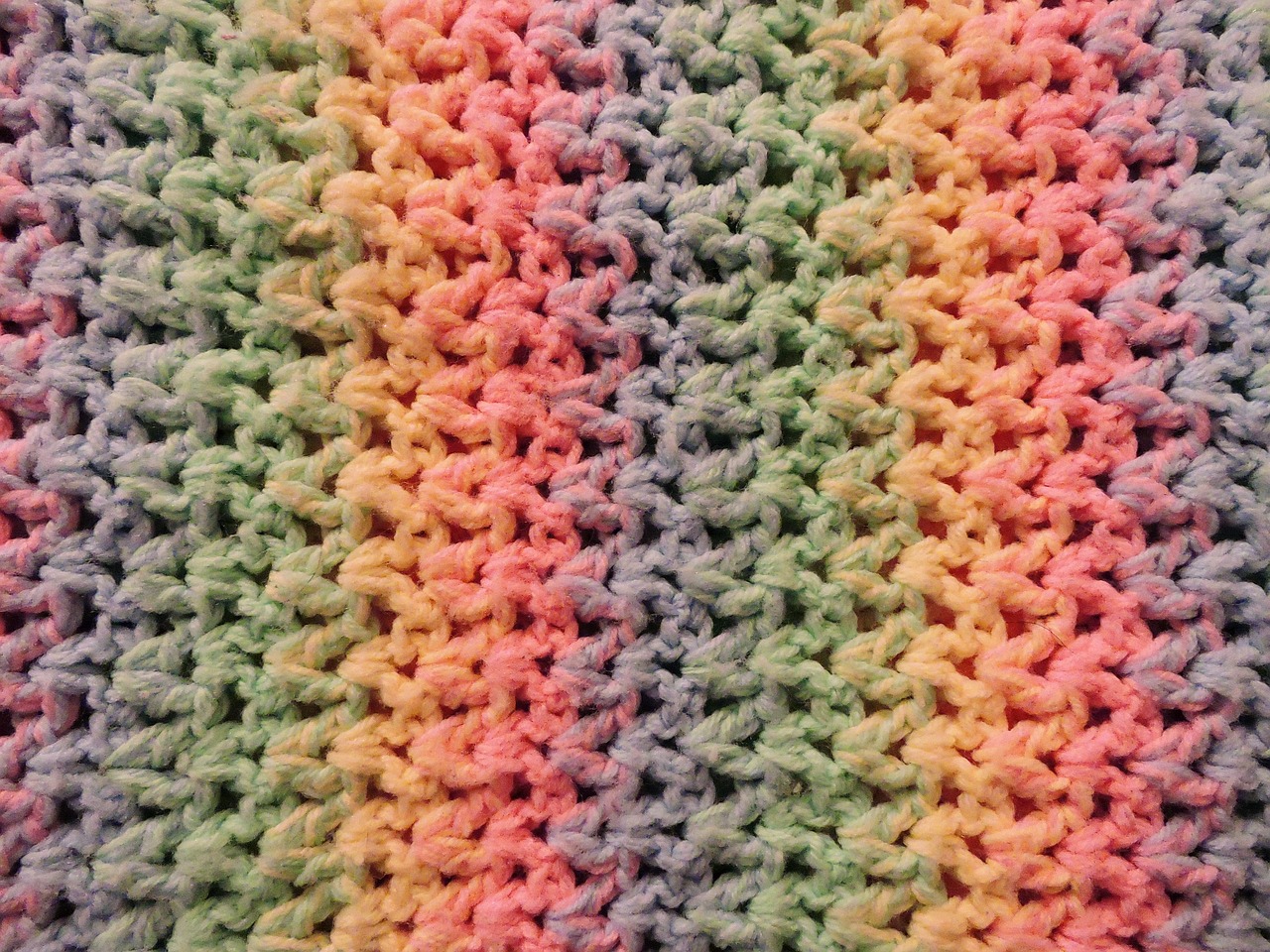
Softwoods vs. Hardwoods
When it comes to choosing the right type of wood for your floating shelves, understanding the difference between softwoods and hardwoods is essential. These two categories of wood are not just defined by their names; they come with unique characteristics that can significantly impact the durability, appearance, and overall functionality of your shelves. Softwoods, such as pine and cedar, are typically lighter and easier to work with. They are often more affordable, making them a popular choice for DIY projects. However, while they may be easier to cut and shape, they can be less durable and more susceptible to dents and scratches compared to hardwoods.
On the other hand, hardwoods like oak, maple, and cherry offer a premium look and feel. They are denser and more durable, which means they can withstand heavier loads and resist wear and tear over time. This makes hardwoods an excellent choice for floating shelves that will hold heavier items or be used in high-traffic areas. The choice between softwoods and hardwoods ultimately depends on your project requirements, budget, and aesthetic preferences.
To help you make an informed decision, here’s a quick comparison:
| Feature | Softwoods | Hardwoods |
|---|---|---|
| Weight | Lightweight | Heavyweight |
| Cost | Generally cheaper | More expensive |
| Durability | Less durable | Highly durable |
| Workability | Easy to cut and shape | Harder to work with |
| Appearance | Natural grain, can be painted | Rich colors, intricate grains |
In summary, if you’re looking for a budget-friendly, easy-to-handle option for your floating shelves, softwoods might be the way to go. However, if you’re aiming for a more elegant and durable solution, investing in hardwoods will pay off in the long run. Remember, the right choice will not only enhance the functionality of your shelves but also elevate the overall aesthetic of your space.
- What are the best wood types for floating shelves?
The best wood types depend on your needs. Softwoods like pine are great for lighter loads, while hardwoods like oak are ideal for heavier items.
- Can I use plywood for floating shelves?
Yes, plywood can be a cost-effective option, providing a sturdy base for floating shelves. Just ensure it’s thick enough to support your intended weight.
- How do I maintain my wooden floating shelves?
Regular dusting and occasional polishing can keep your shelves looking great. Avoid harsh chemicals that might damage the finish.
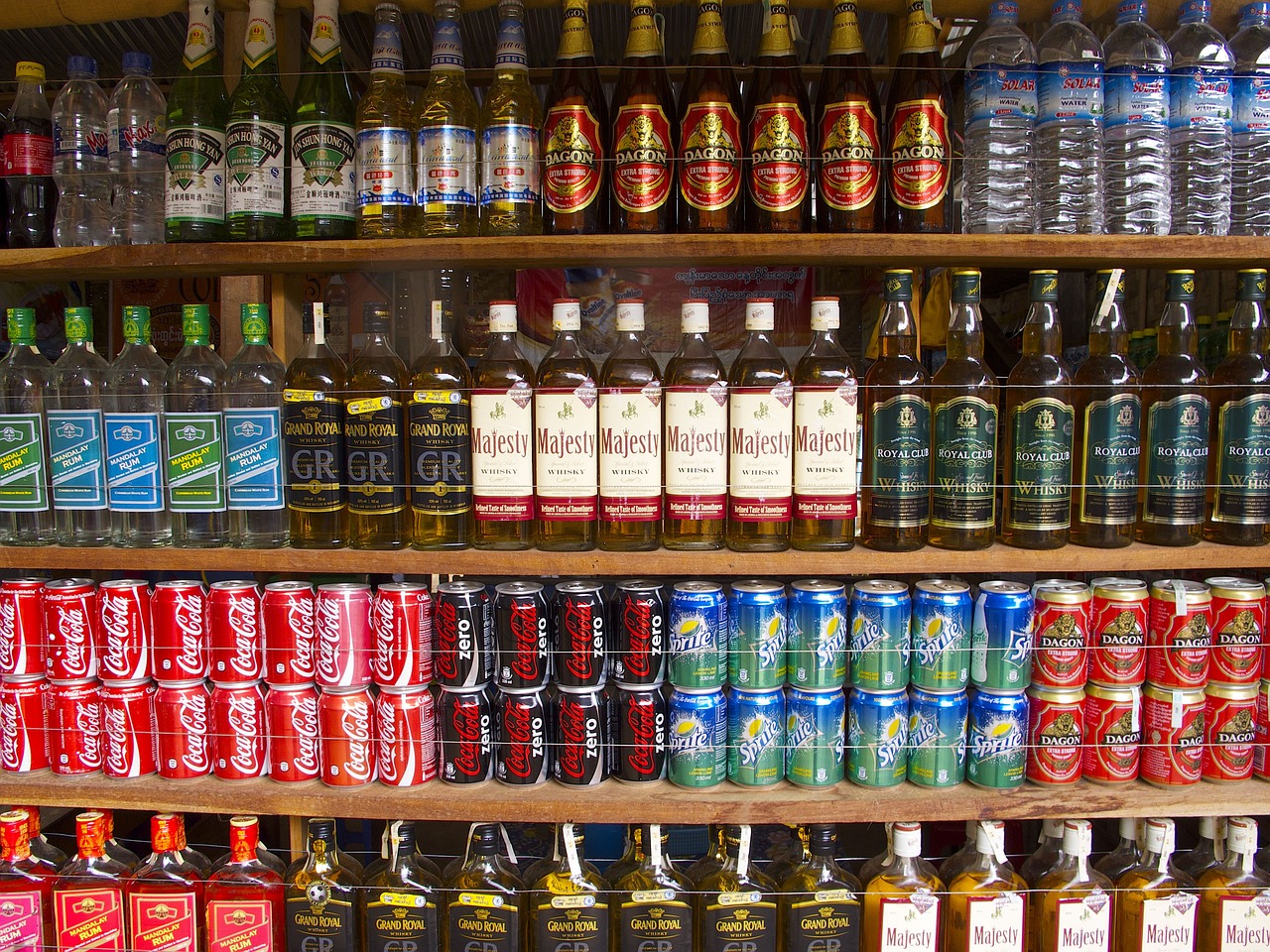
Finishing Techniques for Wood
When it comes to giving your floating shelves that polished and professional look, the finishing techniques you choose can make all the difference. Whether you're going for a rustic charm or a sleek modern vibe, the right finish can enhance the wood's natural beauty while providing protection against wear and tear. Let's dive into some popular finishing techniques that can elevate your DIY project.
One of the most common methods is staining. This technique allows you to bring out the grain of the wood while adding color. Stains come in a variety of shades, so you can easily match your shelves to your existing decor. However, it's essential to test the stain on a small, inconspicuous area first, as different types of wood absorb stain differently. For instance, pine tends to soak up more stain than oak, resulting in a darker finish.
After staining, you might want to consider applying a clear coat. This protective layer can come in the form of polyurethane, varnish, or lacquer. Each option offers different levels of durability and sheen. For example, polyurethane provides a robust finish that can withstand moisture, making it ideal for kitchen or bathroom shelves. On the other hand, lacquer dries quickly and offers a high-gloss finish that can enhance the color of the stain beneath.
Another technique to explore is painting. If you want a bold statement or a pop of color, painting your shelves can be a fantastic option. Before painting, make sure to sand the wood to create a smooth surface. Applying a primer can also help the paint adhere better and provide a more even finish. Remember, multiple thin coats of paint are usually better than one thick coat, as this helps prevent drips and uneven areas.
Lastly, don't overlook the importance of sanding during your finishing process. Sanding not only prepares the wood for finishing but can also create a smoother surface that feels great to the touch. Start with a coarser grit sandpaper and gradually move to a finer grit for the best results. After sanding, always wipe the surface with a damp cloth to remove dust particles before applying any finish.
In summary, the finishing techniques you choose can significantly impact the aesthetic and durability of your floating shelves. Whether you opt for staining, clear coating, painting, or sanding, each method offers unique benefits that can help you achieve the desired look. Take your time, experiment with different finishes, and enjoy the process of transforming your wood into a stunning decor piece!
- What type of finish is best for floating shelves? It depends on your desired look and usage. For high-traffic areas, a durable polyurethane finish is recommended, while a simple stain might suffice for decorative shelves.
- Can I use outdoor finishes on indoor shelves? While outdoor finishes are more durable, they may contain chemicals that are not suitable for indoor use. It's best to use products designed specifically for indoor applications.
- How long does it take for finishes to dry? Drying times vary by product. Generally, oil-based finishes take longer (up to 24 hours), while water-based finishes can dry in a few hours.

Metal and Glass Materials
When it comes to creating floating shelves, metal and glass materials can take your design game to a whole new level. These materials not only provide a modern and sleek aesthetic but also offer durability and versatility that can complement any decor style. Imagine a minimalist living room where the shelves seem to float effortlessly, showcasing your favorite books and decorative pieces without overwhelming the space. This is the magic of using metal and glass!
Metal shelves, often made from materials like steel or aluminum, are incredibly strong and can support a significant amount of weight. They come in various finishes, such as brushed, polished, or powder-coated, allowing you to choose one that best fits your home's aesthetic. On the other hand, glass shelves provide a sense of openness and lightness, making them perfect for smaller rooms where you want to avoid a cluttered look. They can be clear, frosted, or even tinted, giving you options to play with light and color in your space.
One of the best aspects of using metal and glass for floating shelves is the design possibilities. You can mix and match these materials to create a unique look. For example, consider using metal brackets to support a glass shelf. This combination not only looks stunning but also provides the necessary support for heavier items. Installation is straightforward, but it’s essential to ensure that your wall can handle the weight, especially if you're going for larger shelves.
Here’s a quick comparison of the benefits of metal and glass materials:
| Material | Benefits | Considerations |
|---|---|---|
| Metal |
|
Can be heavier; requires sturdy wall support |
| Glass |
|
Can be fragile; needs careful handling |
In summary, whether you opt for the robust nature of metal or the elegant touch of glass, incorporating these materials into your floating shelf project can elevate your home decor. Just remember to consider the weight of the items you plan to place on the shelves and ensure proper installation for maximum safety and style. With a little creativity and the right materials, your floating shelves can become a stunning focal point in any room!
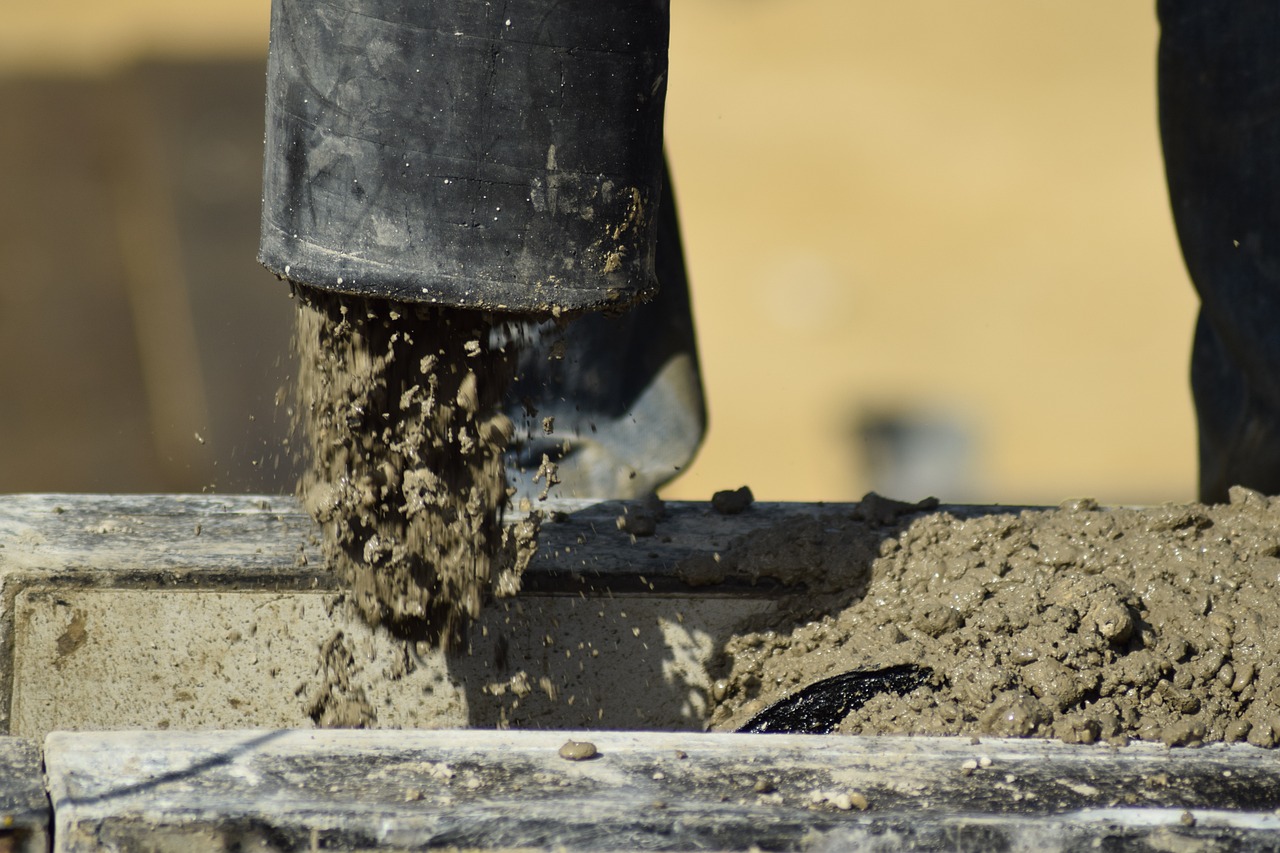
Step-by-Step Installation Guide
Installing floating shelves can seem daunting at first, but with the right guidance, it can be a rewarding DIY project that enhances your space. To kick things off, you'll need to gather a few essential tools: a level, a drill, a stud finder, a measuring tape, and a pencil. These tools will be your best friends throughout the installation process. Before you start drilling holes in your walls, it’s crucial to measure twice and cut once—this old adage holds true here. Accurate measurements will ensure your shelves are not only functional but also aesthetically pleasing.
First, choose the location for your floating shelves. Consider factors like sunlight, accessibility, and visual balance with other furniture in the room. Once you’ve settled on a spot, use the stud finder to locate the wall studs. This is important because mounting your shelves on studs will provide the strength and stability needed to hold your items securely. Mark these spots lightly with your pencil, as they will guide your drilling later on.
Next, it's time to measure and mark where the brackets or cleats will go. Using your measuring tape, determine the height at which you want your shelves to sit. A good rule of thumb is to install them at eye level, usually around 54 inches from the floor, but this can vary based on your personal preference and the items you plan to display. Once you have your desired height, use the level to draw a straight line across the wall, marking where the bottom of the shelf will sit. This will ensure that your shelves are perfectly horizontal, avoiding the dreaded "tilted shelf" look that can drive you crazy.
When it comes to mounting techniques, there are a couple of popular options. The most common methods include using brackets or a cleat system. Brackets provide a sturdy support system, while cleats allow for a more seamless look. If you opt for brackets, attach them to the wall using screws that go into the studs you marked earlier. For cleats, you’ll need to attach a horizontal piece of wood to the wall first, and then mount your shelf on top of it. Regardless of the method you choose, make sure everything is tightly secured to prevent any accidents later on.
After you’ve mounted your shelves, take a moment to step back and admire your work. If everything looks good, it’s time for the fun part—decorating! But before you dive into styling, remember to allow the installation to settle for a few hours, especially if you’ve used any adhesive during the process.
Now that you've got the basics down, you might have a few lingering questions. Here are some common queries about floating shelf installation:
- How much weight can floating shelves hold? This largely depends on the materials used and how well they are mounted. Typically, well-installed shelves can hold between 20 to 50 pounds.
- Can I install floating shelves in drywall? Yes, but it's essential to use wall anchors if you're not securing them into studs. This will help distribute the weight more evenly.
- What is the best height for floating shelves? A good height is generally around 54 inches from the floor, but consider the items you plan to display and your personal preference.
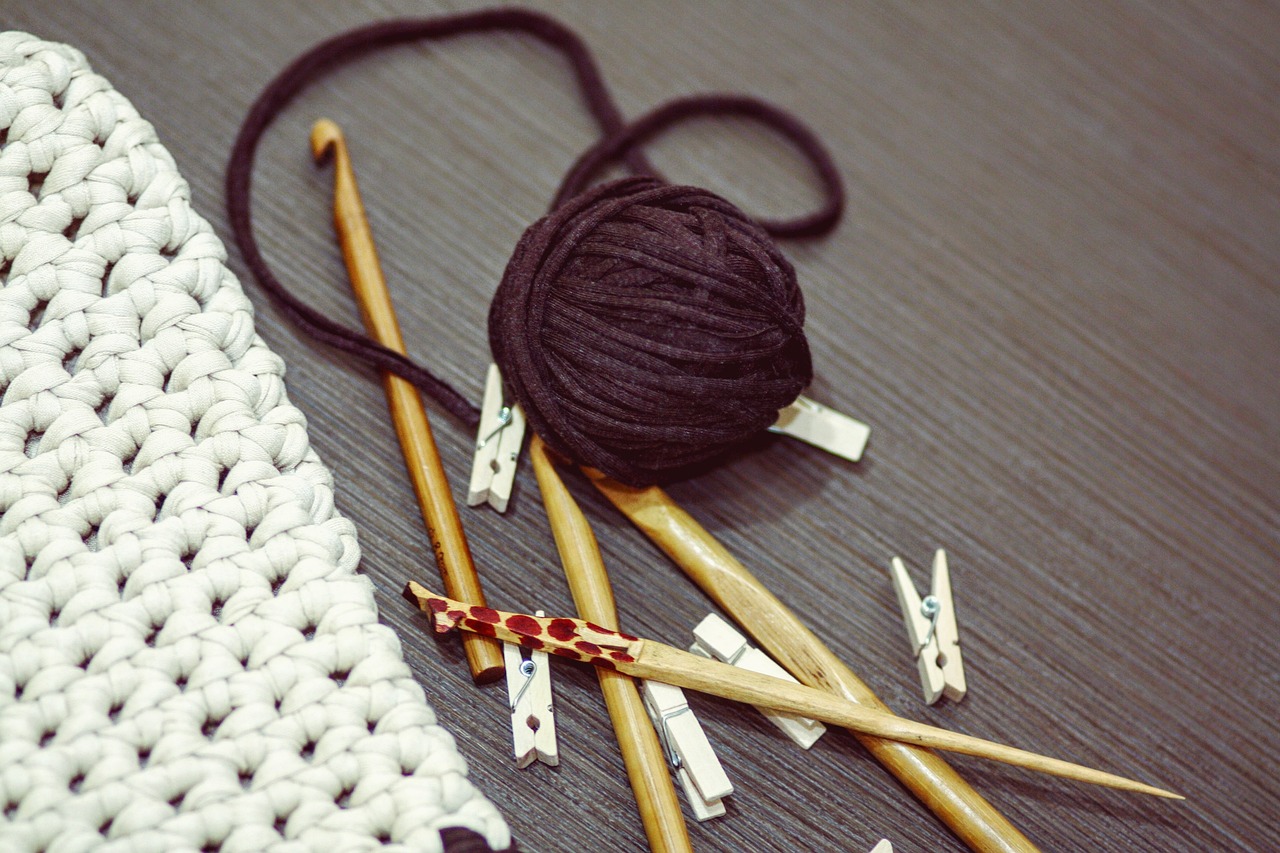
Measuring and Marking
When it comes to installing floating shelves, precision is key. You wouldn't want your beautiful shelves to end up looking like they're on a rollercoaster ride, right? So, let's dive into the nitty-gritty of measuring and marking. First things first, gather your tools: a tape measure, a level, a pencil, and a stud finder. These will be your best friends during this process.
Start by deciding where you want your shelves to go. Visualize it in your mind or even use painter's tape to outline the shelf's position on the wall. This will give you a clear idea of how it will look and help you avoid any surprises later. Once you’ve settled on the location, it’s time to get down to business.
Measure the height at which you want your shelves to be placed. A common rule of thumb is to keep them around eye level for easy access and aesthetic appeal. Use your tape measure to find this height, and then make a small mark on the wall with your pencil. But hold on! Don’t just stop there. You’ll need to ensure that your shelves are level, so grab your level and place it against your mark. Adjust as necessary until it reads perfectly horizontal.
Next, you’ll want to mark where the brackets or supports will go. If you’re using a single bracket, measure the distance from the edge of the shelf to the bracket’s center, and then transfer that measurement to the wall. If you're installing multiple shelves, it’s crucial to maintain equal spacing between them. This is where a measuring tape comes in handy again. For instance, if you want three shelves, decide on the spacing you prefer, maybe 12 inches apart, and mark these distances on the wall.
Here’s a quick tip: If you're unsure about the exact spacing, you can create a simple table to visualize it better:
| Number of Shelves | Height Between Shelves (inches) | Total Height (inches) |
|---|---|---|
| 1 | N/A | Variable |
| 2 | 12 | 24 |
| 3 | 12 | 36 |
Once you have your marks, it’s time to double-check everything. Go back with your level and ensure that all your markings are aligned. Trust me, taking the time to measure and mark accurately will save you a headache later when it comes to installation. If you find that your wall isn’t perfectly straight (which is often the case), don’t fret! You can adjust your marks slightly to ensure a straight line for your shelves.
In summary, measuring and marking may seem tedious, but it’s the backbone of a successful floating shelf installation. By following these steps and taking your time, you’ll be well on your way to creating an eye-catching and functional display that will have your guests asking, “Wow, who did this?”
- How do I know if my wall can support floating shelves? - It's essential to check for studs using a stud finder. Shelves should be anchored into studs for maximum support.
- What tools do I need for installation? - You'll need a tape measure, level, pencil, drill, and possibly a stud finder.
- Can I install floating shelves on drywall? - Yes, but ensure you use proper anchors if you're not hitting studs.
- How much weight can floating shelves hold? - This depends on the materials used and the installation method, but generally, they can hold between 20-50 pounds if installed correctly.
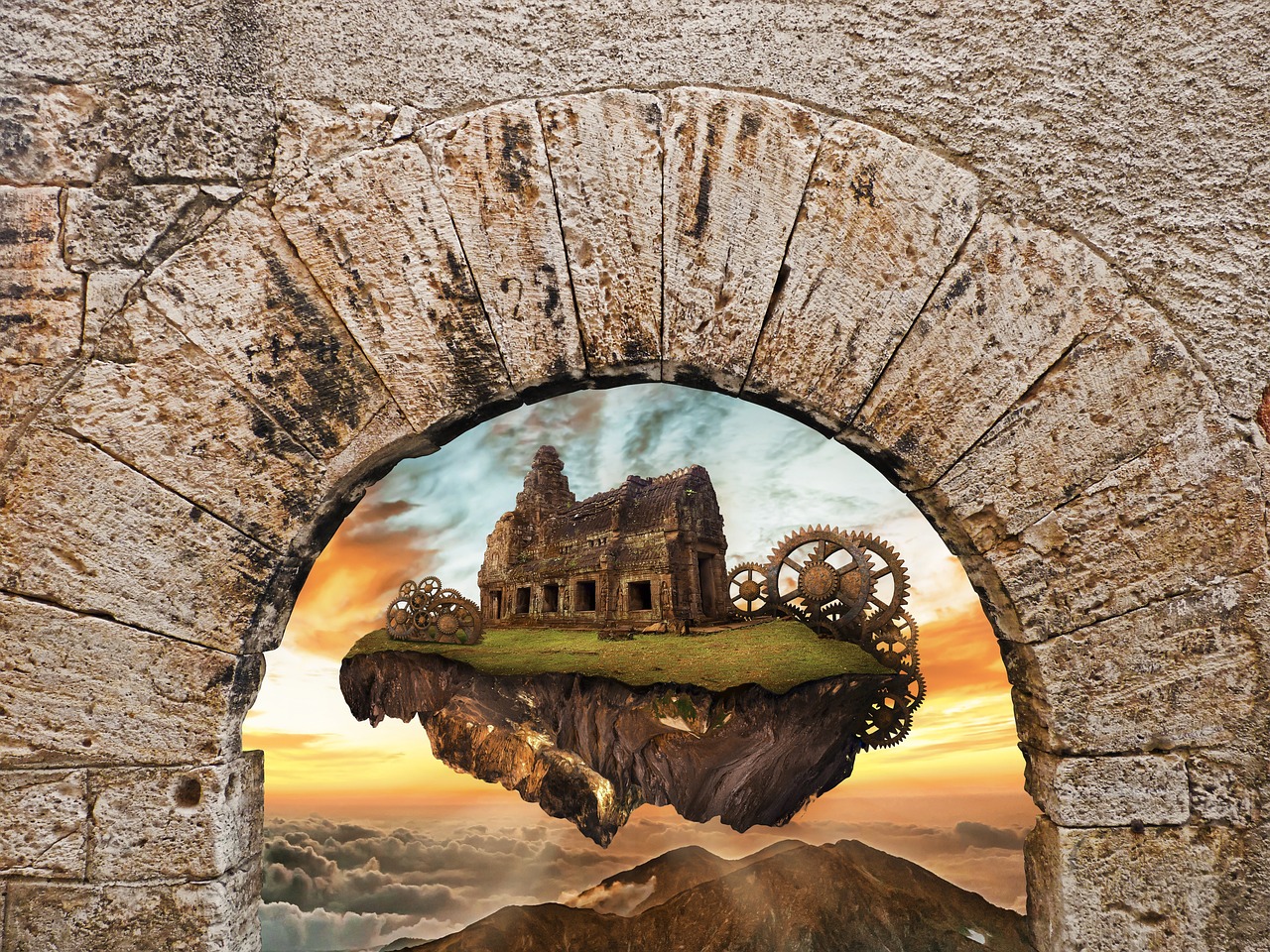
Mounting Techniques
When it comes to installing floating shelves, the mounting technique you choose is crucial for ensuring that your shelves are not only secure but also aesthetically pleasing. There are several methods available, each with its own set of advantages and considerations. Let's dive into some of the most popular techniques.
One of the most common methods is using brackets. These are typically L-shaped metal pieces that are attached to the wall first, providing a sturdy base for your shelves. The beauty of brackets is that they can support a significant amount of weight, making them ideal for heavier items like books or decorative vases. However, they can be visible, which might not suit everyone's taste. If you prefer a more seamless look, you might want to consider using cleats. Cleats are long strips of wood or metal that are mounted to the wall and allow the shelf to rest on top. This method provides excellent support while keeping the installation hidden from view, creating that clean, floating effect that many homeowners desire.
Another mounting option is the use of invisible shelf supports. These are small brackets that are concealed within the shelf itself, giving the illusion that the shelf is floating without any visible means of support. This technique is perfect for minimalist decor styles and can be used to create a striking visual impact. However, it’s important to note that invisible supports can be a bit trickier to install, as they require precise measurements and drilling to ensure that the shelves are level and secure.
Before you decide on a mounting technique, consider the following factors:
- Weight Capacity: Ensure that the method you choose can support the items you plan to place on the shelves.
- Wall Material: Different wall materials (drywall, concrete, etc.) may require specific types of anchors or screws.
- Aesthetic Preference: Think about whether you want your mounting hardware to be visible or hidden.
Ultimately, the right mounting technique will depend on your personal style, the weight of the items you wish to display, and the type of wall you are working with. Take your time to evaluate your options, and don't hesitate to consult with a professional if you're unsure. A well-mounted floating shelf can transform your space, providing both functionality and a touch of elegance.
Q: What is the best material for floating shelves?
A: The best material largely depends on your aesthetic preferences and the weight of the items you plan to place on the shelves. Wood offers warmth and versatility, while metal and glass provide a modern touch.
Q: How much weight can floating shelves hold?
A: This varies based on the mounting technique and materials used. Generally, well-installed floating shelves can hold anywhere from 20 to 100 pounds, but it's always best to check the specifications of your chosen mounting hardware.
Q: Can I install floating shelves on drywall?
A: Yes, but you'll need to use appropriate anchors to ensure stability. For heavy items, it's best to locate wall studs for additional support.
Q: How do I maintain my floating shelves?
A: Regularly dust your shelves and avoid placing overly heavy items on them. If you notice any sagging or instability, check the mounting hardware to ensure everything is secure.
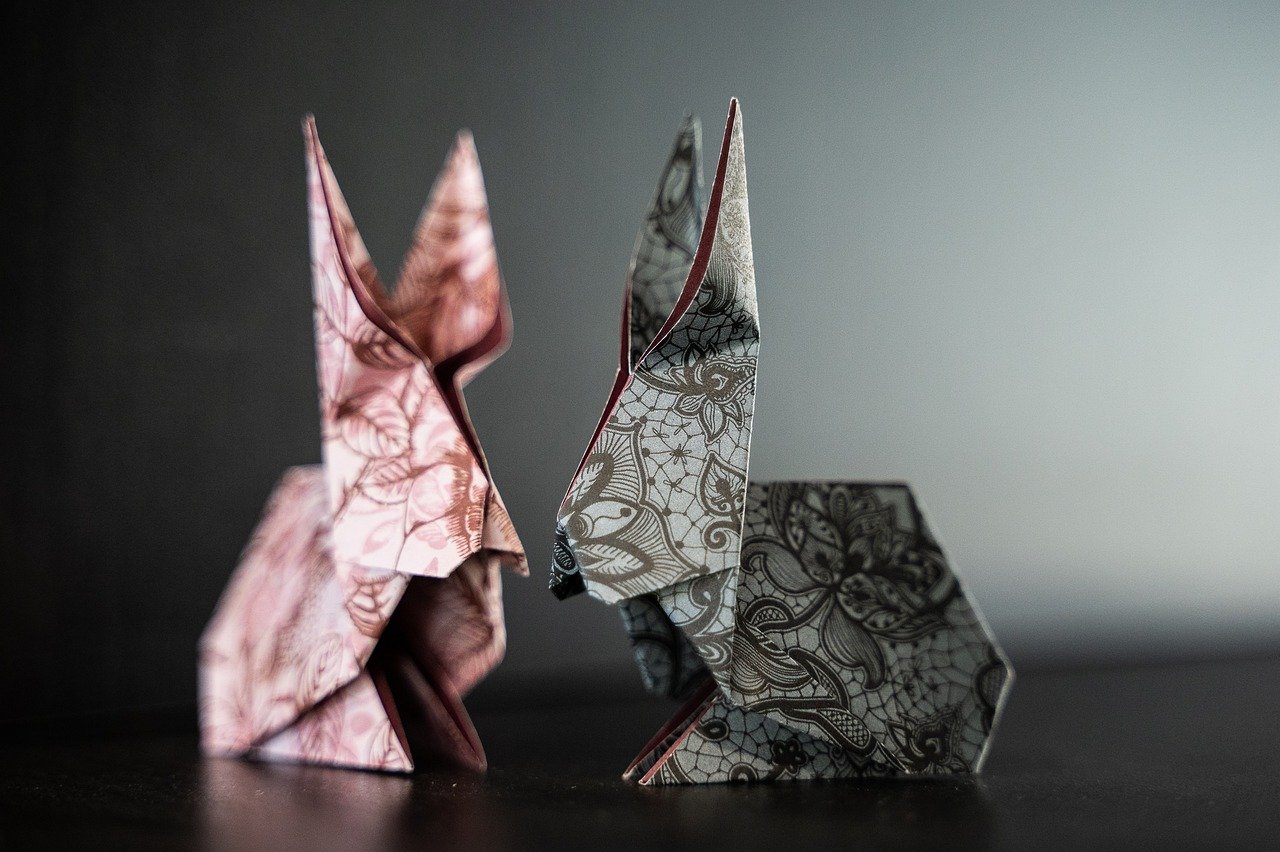
Decorating Your Floating Shelves
Once you've successfully installed your floating shelves, the fun part begins: decorating them! This is where you can truly let your creativity shine and personalize your space. Think of your floating shelves as a blank canvas, ready to be transformed into a beautiful display that reflects your personality and style. But how do you go about decorating them effectively? Let's dive into some ideas and tips that can help you create stunning arrangements.
First and foremost, consider the theme of your room. Are you going for a cozy, rustic vibe, or perhaps a sleek, modern look? The items you choose to display should align with the overall aesthetic of your space. For instance, if your home has a contemporary feel, incorporating metallic accents or geometric decor can enhance that modern touch. On the other hand, if you're aiming for a more traditional look, wooden items or vintage finds might be the way to go.
When selecting decorative items, think about incorporating a mix of textures, heights, and colors. This variety will create visual interest and prevent your shelves from looking too cluttered or monotonous. Here are a few ideas to get you started:
- Plants: Adding greenery can breathe life into your shelves. Choose small potted plants, succulents, or even hanging plants to introduce a natural element.
- Books: Stack or lean books against the wall. They not only serve as decor but also provide a personal touch that showcases your interests.
- Artistic Pieces: Incorporate sculptures, vases, or framed art. These items can be conversation starters and add a unique flair to your display.
- Personal Mementos: Displaying items that have sentimental value, like travel souvenirs or family photos, can make your shelves feel more like home.
Arranging your items is just as important as choosing them. A well-thought-out arrangement can significantly impact the overall look of your shelves. Here are some tips to keep in mind:
- Balance: Aim for a balanced look by distributing items of varying sizes and weights evenly across your shelves. This will create harmony and prevent any one side from feeling too heavy.
- Layering: Don’t be afraid to layer items. Place larger items at the back and smaller ones in front to create depth.
- Negative Space: Allow for some empty space between items. This negative space can help your decor breathe and make each piece stand out.
Finally, don't hesitate to change things up! One of the best parts about floating shelves is that they can be easily re-decorated. Seasonal changes, new finds, or simply a desire for a fresh look can inspire you to rearrange or swap out items. Keep your shelves dynamic, and let them evolve with your style and interests.
Q: What types of items are best for decorating floating shelves?
A: It's best to mix various items such as plants, books, decorative pieces, and personal mementos to create a balanced and visually appealing display.
Q: How can I ensure my floating shelves are not overcrowded?
A: Focus on balance and negative space. Allow some areas to be empty to create a clean and organized look.
Q: Can I change the decor on my floating shelves seasonally?
A: Absolutely! Changing your decor seasonally is a great way to keep your space feeling fresh and inviting.

Choosing Decorative Items
When it comes to decorating your floating shelves, the right choice of decorative items can make all the difference. Think of your shelves as a blank canvas, waiting for you to unleash your creativity. The goal is to create a visually appealing display that reflects your personal style and enhances the overall aesthetic of your room. So, how do you choose the right items? Well, it starts with understanding a few fundamental principles of design.
First and foremost, consider the balance of your display. This doesn’t mean everything has to be perfectly symmetrical, but you should aim for a sense of harmony. For instance, if you place a large item on one side, balance it out with several smaller pieces on the opposite side. This can help create a cohesive look that draws the eye without overwhelming the space. A great way to achieve this is by using a mix of shapes and sizes. Think about incorporating:
- Books: Stack them horizontally or display them vertically.
- Plants: Add greenery for a fresh and lively touch.
- Artistic Pieces: Include sculptures or vases that resonate with your style.
Next, let’s talk about color. Choose a color palette that complements the room’s decor. This doesn’t mean you have to stick to one or two colors; instead, think about how different hues can work together. For example, if your room features neutral tones, you might want to add pops of color through your decorative items. A vibrant vase or colorful books can serve as striking focal points that enliven the space.
Another crucial aspect is the theme of your decor. Are you going for a rustic, modern, or bohemian vibe? Your choice of items should align with this theme. For instance, if you’re aiming for a rustic look, consider using wooden items, vintage books, or handmade ceramics. On the other hand, if modern is your style, sleek metal accents or minimalist decor can be the way to go.
Lastly, don’t forget about the functionality of your shelves. They should not only look good but also serve a purpose. Incorporating items that you use regularly, like a small clock or a decorative bowl for keys, can keep your space organized while still being stylish. Think of your shelves as both a display and a storage solution. You can mix practical items with decorative ones to create a balanced and functional arrangement.
In conclusion, choosing the right decorative items for your floating shelves is all about balance, color, theme, and functionality. By considering these elements, you can transform your shelves into stunning focal points that enhance your home decor and showcase your unique style.
Q: How many items should I put on my floating shelves?
A: It's best to avoid overcrowding. Aim for 3 to 5 items per shelf, depending on their size. This will help maintain balance and visual appeal.
Q: Can I mix different materials on my shelves?
A: Absolutely! Mixing materials like wood, metal, and glass can add depth and interest to your display. Just ensure they complement each other in terms of style and color.
Q: How do I keep my decorative items from falling off the shelves?
A: Ensure your shelves are securely mounted and consider using items with a stable base. You can also use museum putty for smaller items to keep them in place.
Q: What if my shelves are in a high traffic area?
A: In high traffic areas, opt for more durable items that can withstand occasional bumps. Avoid fragile pieces to prevent accidents.

Arranging for Visual Impact
When it comes to arranging items on your floating shelves, the goal is to create a visually appealing display that draws the eye and complements your overall decor. Think of your shelves as a blank canvas where you can showcase your personality and style. To achieve this, you need to consider a few key principles of design. First, balance is crucial. You don’t want all your heavier items on one side and lighter ones on the other. Instead, aim for a harmonious distribution of weight. This is akin to balancing a seesaw; if one side is too heavy, it just won't work!
Next, consider the color palette of your items. A cohesive color scheme can unify your display and create a more polished look. You might want to use items that share a similar color or complement each other. For instance, if your room features earthy tones, incorporating natural wood elements, green plants, and terracotta pots can tie everything together beautifully. On the other hand, a mix of bold colors can create a striking visual impact, just like a vibrant painting in a neutral room.
Another important factor is the theme of your decor. Are you going for a modern, minimalist look or a cozy, rustic vibe? Your choice of decorative items should reflect this theme. For a modern aesthetic, consider sleek metal sculptures or geometric vases. If you prefer a more rustic feel, think about vintage books, woven baskets, or handmade pottery. Remember, your shelves should tell a story about who you are and what you love!
Now, let’s talk about the arrangement itself. A common technique is the Rule of Thirds, which suggests dividing your shelf into three equal parts. Place your larger items or focal points in one-third of the space, while the remaining two-thirds can hold smaller items or accents. This method creates visual interest and encourages the eye to explore the entire shelf. Additionally, varying the heights of your items can add depth and dimension. For example, you might place a tall plant next to a stack of books, creating a dynamic contrast.
Finally, don’t forget to leave some negative space. This is the area without any items, which can help prevent your shelves from looking cluttered. Just like in art, negative space can enhance the beauty of your display by allowing the eye to rest. Aim for a mix of filled and empty spaces to keep things interesting. Think of it as breathing room for your decor!
- How do I choose the right items for my floating shelves? Consider your personal style, the color scheme of your room, and the theme you want to convey. Balance and proportion are key.
- Can I mix different materials on my shelves? Absolutely! Mixing materials like wood, metal, and glass can create a visually appealing contrast and add texture to your display.
- What should I avoid when decorating my shelves? Avoid overcrowding your shelves with too many items. It's important to leave some space to create a clean and organized look.
- How often should I change the decor on my shelves? There's no set rule, but changing your decor seasonally or whenever you feel inspired can keep your space fresh and exciting!
Frequently Asked Questions
- What are the benefits of installing floating shelves?
Floating shelves are a fantastic way to enhance your home decor while providing functional storage solutions. They save space, allow for creative display options, and can be customized to fit your style. Plus, they give your room a modern, sleek look!
- What materials should I use for my floating shelves?
Choosing the right materials is essential for the durability and aesthetics of your floating shelves. Common options include wood, metal, and glass. Each material has its unique characteristics, so consider what fits your style and needs best!
- How do I install floating shelves?
Installing floating shelves involves a few key steps. First, ensure you have accurate measurements for leveling and spacing. Then, choose a suitable mounting technique, whether it's brackets or cleats, to secure your shelves properly. Following a step-by-step guide can make this process much easier!
- What types of wood are best for floating shelves?
When selecting wood for your floating shelves, consider options like pine, oak, or plywood. Softwoods like pine are lightweight and easy to work with, while hardwoods like oak provide durability and a premium look. Think about the aesthetic and strength you want for your project!
- How can I decorate my floating shelves?
Decorating your floating shelves is where the fun begins! Use a mix of plants, books, and decorative items to create a visually appealing display. Remember to consider balance, color, and theme, and arrange your items for maximum impact!
- What finishing techniques can I use for wooden shelves?
Finishing techniques like staining or painting can significantly enhance the appearance of your wooden shelves. These finishes not only protect the wood but also allow you to achieve the desired look that complements your decor!



















